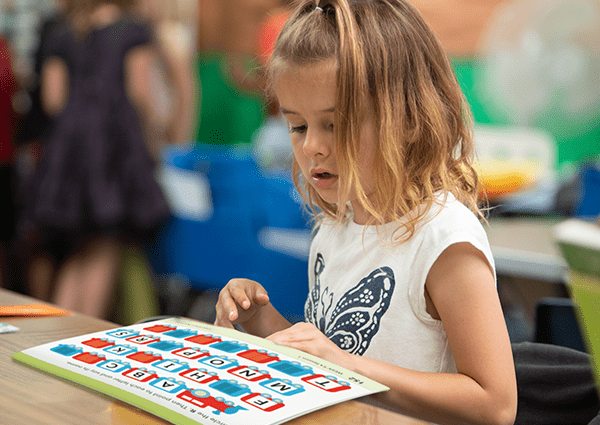Riddle me this. If someone knows how to decode and recognizes nondecodable words on sight, is that person a reader?
It feels silly to say this—gratuitous even—but here we go: When it comes to reading instruction, knowledge matters. For decades, reading instruction has centered on drilling students in skills and strategies. But recent research is singing a different tune. If we want to create a nation of readers and critical thinkers, then our reading programs need to give students something to think about.
I mean, we already know explicit phonics instruction is important. But once our students have mastered decoding, their growth as readers relies heavily on vocabulary and background information. Students can’t move forward and mature as readers without building their knowledge banks.
Knowledge Begets Knowledge
We talk about research all the time in education, and this topic is no different. Research tells us knowledge leads to more knowledge! The more you know, the easier it is to learn more. It helps our students connect new information to what they already know. It also helps them make inferences, use fewer working memory resources, and think deeply about complex topics.
Knowledge is not only cumulative—it grows exponentially. Those with a rich base of factual knowledge find it easier to learn more. The rich get richer.
—Daniel T. Willingham, How Knowledge Helps
Knowledge Makes the Most of Instruction Time
Make the most of every instructional minute by using knowledge-rich titles for learning to read. This helps by actively building students’ knowledge of history, geography, science, arts, and so much more at the same time they’re learning reading skills. When you integrate other content areas and topics into what you teach, you’re helping your kids make connections and beef up their internal filing systems.
Knowledge Leads to Comprehension
We can’t improve reading by drilling students with generic comprehension strategies. Knowledge is central to developing comprehension skills. Some studies even suggest that knowledge matters more than explicit instruction when building reading comprehension skills. In Building Background Knowledge, researchers write: “We would venture to guess that students’ understanding of the text is unlikely to improve unless we begin to more deliberately teach background knowledge.”
Knowledge Is an Equity Issue
Just one day in a kindergarten classroom will tell you that no two students come to school with the exact same knowledge base. But, regardless of how much they know when they enter school, all kids need a rich understanding of the world to succeed beyond grade school. A robust reading program can help address those differences while engaging students through wide reading. Use titles that start with what students already know about the world around them. Then add in new topics to draw connections with experiences that are very different from their own. This is how we build schema.
Knowledge Is Magical
“School” began as the Greek word scholé, which translates to “leisure,” but not leisure in the lounging, vacation, napping sense. Rather, to the ancient Greeks, scholé was more about contemplation and the unique pleasure that comes from learning.
Gaining knowledge can—and should—be a joyful experience. With all the politics that’s crept into our field, it’s easy to lose sight of the magic of reading. When we remember that literacy is a right and a superpower, it’s easier to also remember that knowledge through reading should inform and inspire. When we teach students to read, we are teaching them to love knowledge, be curious, and think deeply. We are teaching them the meaning of scholé.









